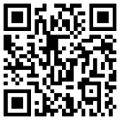Overcoming the Influence of Social Media based on Students’ Gender Differences
Abstract
Full Text:
PDFReferences
M. Badri, A. Al Nuaimi, Y. Guang, and A. Al Rashedi, “School performance, social networking effects, and learning of school children: Evidence of reciprocal relationships in Abu Dhabi,” Telemat. Informatics, vol. 34, no. 8, pp. 1433–1444, 2017.
R. Tolliday, “Sensis social media report 2017-Chapter 1-Australian and social media,” Melbourne, Australia, 2017.
Y. E. Shaoyu, A. T. Oshimori, and T. H. Horita, “Causal Relationships between Media/Social Media Use and Internet Literacy among College Students: Addressing the Effects of Social Skills and Gender Differences,” Educ. Technol. Res., vol. 40, no. 1, pp. 61–70, 2018.
J. Mingle and M. Adams, “Social media network participation and academic performance in senior high schools in Ghana,” Libr. Philos. Pract., no. 1286, pp. 7–21, 2015.
D. M. Kaplan, “Technology and Globalization,” A Companion to Philos. Technol., pp. 325–328, 2009.
M. Jan, S. A. Soomro, and N. Ahmad, “Impact of Social Media on Self-Esteem,” Eur. Sci. J., vol. 13, no. 23, pp. 2015–2018, 2017.
L. S. Huey and R. Yazdanifard, “How Instagram can be used as a tool in social network marketing,” Center for Southern New Hampshire University, 2015.
M. Hellberg, “Visual Brand Communication on Instagram: A study on consumer engagement,” Hanken School of Economics, 2015.
S. Alhabash and M. Ma, “A Tale of Four Platforms: Motivations and Uses of Facebook, Twitter, Instagram, and Snapchat Among College Students?,” Soc. Media + Soc., vol. 3, no. 1, 2017.
Y.-T. Huang and S.-F. Su, “Motives for Instagram Use and Topics of Interest among Young Adults,” Futur. Internet, vol. 10, no. 8, p. 77, 2018.
Y. Hu, L. Manikonda, and S. Kambhampati, “What We Instagram : A First Analysis of Instagram Photo Content and User Types,” in Eighth International AAAI conference on weblogs and social media, 2014.
A. J. Al-Kandari, A. A. Al-Hunaiyyan, and R. Al-Hajri, “The Influence of Culture on Instagram Use,” J. Adv. Inf. Technol., vol. 7, no. 1, pp. 54–57, 2016.
F. Nakajima, H. Masuda, S. Okano, and Y. Katsuoka, “Gravitation Abscess Developed from Renal Tuberculosis : A Case Report,” Japanese J. Clin. Urol., vol. 52, no. 12, pp. 957–959, 1998.
R. Liu and A. Suh, “Self-Branding on Social Media: An Analysis of Style Bloggers on Instagram,” Procedia Comput. Sci., vol. 124, pp. 12–20, 2017.
R. Johns, “Likert Items and Scales,” SURVEY QUESTION BANK: Methods Fact Sheet 1, 2010. [Online]. Available: https://ukdataservice.ac.uk/media/262829/discover_likertfactsheet.pdf. [Accessed: 17-Oct-2017].
DOI: http://dx.doi.org/10.17977/um010v2i22019p036
Refbacks
- There are currently no refbacks.
 | Letters in Information Technology Education (LITE) |

1.png)
1.png)
4.png)
1.png)
.png)
.png)

3.png)
1.png)
1.png)

3.jpg)